Vienna - The City Of Music
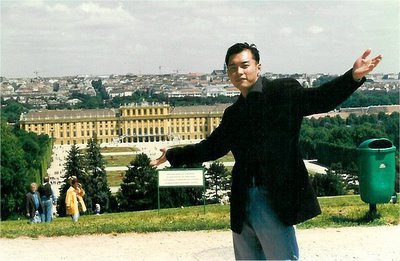
Welcome To Vienna
Thanks for coming back to Best Experiences By Sean Toh. Today, I would love to share my personal experience when I was in Vienna. Vienna is a beautiful country that I would never forget. Vienna has plenty to offer for everyone. Arts and culture, sports and relaxation, pleasure and recreation. About 3,5 million visitors convinced themselves in 2004. The world capital of music was home to numerous opera, operetta and musical composers. Music lovers the world over are attracted to Vienna. 2006 will celebrate Mozart's 250 birthday, a fact already felt in many places today. There is a lot to be discovered along with Schönbrunn castle or Saint Stephan's cathedral.
Vienna's cultural life is multi-faceted. You have the choice of 50 theatres, four opera houses, two stages for musicals, 100 museums and numerous theatre, music and dance festivals. The Museumsquartier (museum quarter) with its baroque facade is home to one of the biggest cultural districts in Europe.
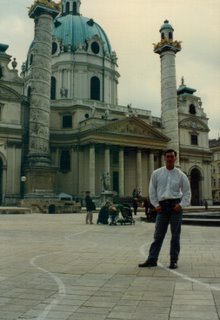 Vienna is known worldwide as a city of music. Quality orchestras and ensembles are its seal of excellence. Along with well-established ensembles for contemporary music classical music continues to play a vital role, as made evident by the City of Vienna Concert Orchestra and the Vienna Symphony Orchestra, amongst others. The Vienna Academy, the Vienna Chamber Orchestra and the Women's Chamber Orchestra are dedicated to tradition and modern music alike. International artists are a great gain to cultural life in Vienna.
Vienna is known worldwide as a city of music. Quality orchestras and ensembles are its seal of excellence. Along with well-established ensembles for contemporary music classical music continues to play a vital role, as made evident by the City of Vienna Concert Orchestra and the Vienna Symphony Orchestra, amongst others. The Vienna Academy, the Vienna Chamber Orchestra and the Women's Chamber Orchestra are dedicated to tradition and modern music alike. International artists are a great gain to cultural life in Vienna.Apart from the federal theatres and the Vereinigte Bühnen there are many small, private theatres in Vienna. Numerous theatre ensembles perform in old factory buildings or on public squares. A theatre for young people between two and 20 was established in the Museumsquartier in autumn 2004.
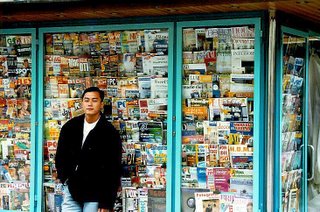 Replenish your energy in one of the many restaurants or Heurigen or retire to one of the famous Viennese cafes after a good dose of art and culture. For those keen on shopping there are plenty of flea markets and shopping streets to browse through. Accommodation in Vienna includes everything from low budget to designer hotels. Come and enjoy. Vienna waits for you.
Replenish your energy in one of the many restaurants or Heurigen or retire to one of the famous Viennese cafes after a good dose of art and culture. For those keen on shopping there are plenty of flea markets and shopping streets to browse through. Accommodation in Vienna includes everything from low budget to designer hotels. Come and enjoy. Vienna waits for you. During the summer months the Vienna Film Festival on the Rathausplatz in front of the City Hall attracts music lovers from all corners of the world. The City Hall provides a perfect backdrop for classical music performances and an international culinary experience along the many food stands there.
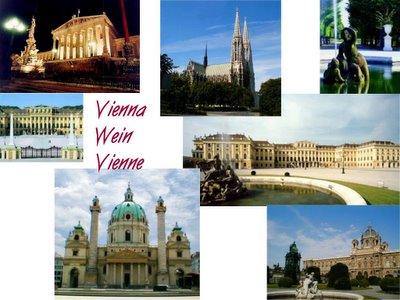 Dressing code
Dressing codeFor business wear suits, outside business dress casual - generally jacket, tie for men and good dressy costume / garment for women. For going out tonight to opera, theatre or restaurant smart clothing is recommended.
Tipping
You usually give 10%-15% to taxidrivers and waiters at the restaurant. Liftboys and porters expect about 0,5-1 Euro.ticket-machines, but handling is not easy and the more the tariffsystem offers many special advantages and therefor it is complex. By the way, You can buy tickets also in "Tabak-Trafik", special shops for papers and cigaretts.
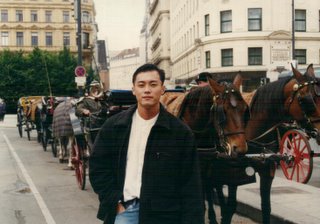 Practical tips for Vienna-travelers
Practical tips for Vienna-travelersTaxis and car-driving
It is usual that taxi-drivers take the shortest and/or fastest way from starting point to target point. "Black sheeps" can be there like in every branch. Nevertheless Austrians are correct drivers. In Vienna there 50 km/h is allowed, in some areas there is a 30 km/h-zone - specially near hospitals or near living houses.
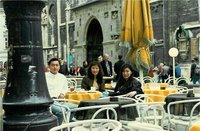 Greeting and invitation
Greeting and invitationYou should address people by their title and greet them with a handshake. The title is part of the name and Austrian people even have the right to be addressed with title. This goes back to Kaiser-time. When invited to somebody it is usual to present a small gift like a bottle of wine for a man and chocolate or flowers to a woman.
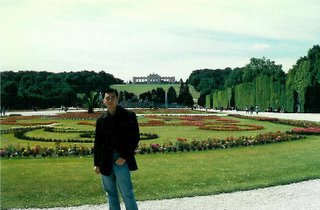 Schonbrunn Palace
Schonbrunn PalaceSchönbrunn Palace is one of the most important cultural monuments in Austria and since the 1960s has also been one of the major tourist attractions in Vienna. Soon after the end of the monarchy the population of Vienna discovered the park as an attractive recreational area. Eventually the palace was also opened to the public, drawing around 1.5 million visitors annually. The park and all the other attractions at Schönbrunn together see a further 5.2 million visitors each year, giving a grand total of 6.7 million visitors to the imposing palace complex each year.
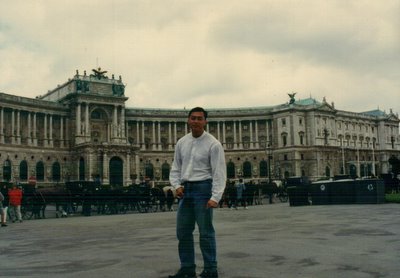
Hofburg Imperial Palace
In front the statue of Prince Eugene of Savoy.
Hofburg Imperial Palace is a palace in Vienna, Austria, which has housed some of the most powerful people in Austrian history, including the Habsburg dynasty, rulers of the Austro-Hungarian empire, and currently serves as the official residence of the President of Austria. It was also known as the winter-residence, while Schönbrunn Palace was the prefered summer-residence.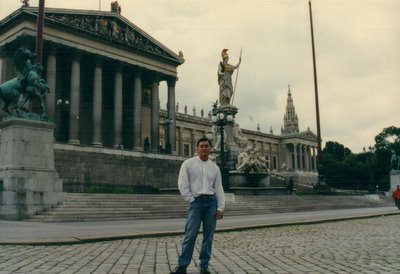
Parliament of Austria
The Parliament of Austria consists of two chambers,
the Nationalrat (national council) and
the Bundesrat (federal council).
The composition of the Nationalrat is determined every four years by general elections. The national council is the dominant chamber in the Austrian legislation.
The Bundesrat is fed by the individual Landtagen (Parliament of the States of the Federal Republic). The Bundesrat possesses a dilatory right of veto in most cases, that only a strong, persistant resolution of the national council can set into place.
The Bundesversammlung consists of the members of both houses of parliaments and convenes only on rare occasions.The parliament building is located on the Viennese Ringstrasse, one of the city's most famous and central sights. It was built during 1874-1883 by Theophil von Hansen as head of the government. Hansen concentrated on a neo-attic, classic Greek style of architecture for Austria's hub of government. Before the parliament building stands the Pallas Athena, a statue of the Greek goddess of wisdom. During the Austro-Hungarian monarchy, the building housed the Reichsrat of Cisleithania.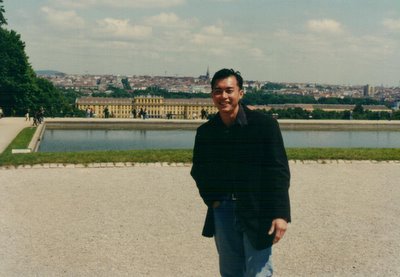
Modern Palace
The Gloriette at the top of the hill behind the palace Emperor Leopold I gave architect Johann Bernhard Fischer von Erlach the order to design a new palace. His first draft was a very utopian one, dealing with different antique and contemporary ideals. His second draft showed a smaller and more realistic building. Construction began 1696 and after three years the first festivities were held in the newly built middle part of the palace.
Unfortunately, not many parts of the first palace survived the next century because every emperor added or altered a bit on the inner and outer parts of the building. By order of Empress Maria Theresa of Austria, the architect Nikolaus Pacassi reshaped Schönbrunn Palace in a way of the style of the Rococo era. At the end of the so-called Theresianian epoch Schönbrunn Palace was a vigorous centre of Austria's empire and the royal family.
In the 19th century one name is closely connected with Schönbrunn's, Emperor Franz Josef I of Austria. He spent most of his life here and died on November 21, 1916 in his sleeping room. Through the course of his reign, Schönbrunn Palace was seen as a Gesamtkunstwerk (total work of art) and remodelled in accordance with its history.The palace complex includes sets of faux Roman ruins and an orangerie, staple luxuries of European palaces of its type. 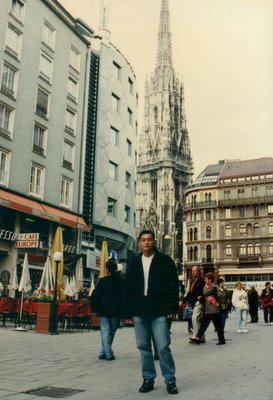 Stephansdom
Stephansdom
The Stephansdom (Cathedral of Saint Stephen), in Vienna, Austria, is the seat of a Roman Catholic Archbishop, a beloved symbol of Vienna and the site of many important events in Austria's national life.
The Stephansdom was saved from deliberate destruction by retreating German forces during World War II when Captain Gerhard Klinkicht disregarded orders from the city commandant, Sepp Dietrich, to "fire a hundred shells and leave it in just debris and ashes." One of the fires set by plunderers as Russian troops entered the city was carried by the wind to the cathedral and it was severely damaged on 12 April 1945. Fortunately, protective brick shells had been built around the Pulpit, Frederick III's tomb and other treasures so damage to the most valuable artworks was minimzed. Unfortunately, the beautifully-carved choir stalls from 1487 burned. Rebuilding started immediately, with a partial reopening on 12 December 1948 and full reopening on 23 April 1952.
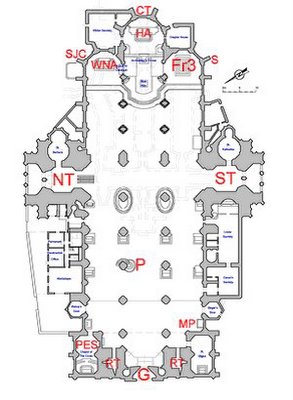 Plan of the cathedral, with features mentioned in this article marked with red letters. CT "Christ with a Toothache" sculpture; Fr3 Tomb of Emperor Frederick III; G Giant Door HA High Altar; MP Maria Pötsch icon; NT North Tower; P Pulpit; PES Prince Eugene of Savoy burial chapel; RT Roman Towers; S Sundial; SJC Saint John of Capistrano pulpit; ST South Tower; WNA Wiener Neustädter Altar.
Plan of the cathedral, with features mentioned in this article marked with red letters. CT "Christ with a Toothache" sculpture; Fr3 Tomb of Emperor Frederick III; G Giant Door HA High Altar; MP Maria Pötsch icon; NT North Tower; P Pulpit; PES Prince Eugene of Savoy burial chapel; RT Roman Towers; S Sundial; SJC Saint John of Capistrano pulpit; ST South Tower; WNA Wiener Neustädter Altar.Vienna Museum Of Fine Arts
The Museum of Fine Arts was built from 1872 to 1891 after designs by Gottfried Semper and Karl von Hasenauer. It ranks among the richest and most important art collections of the world. Due to the Habsburg family's fondness of art collections the museum houses impressible art treasures. At Vienna's Museum of Fine Arts you can admire paintings by Rubens, Rembrandt, Vermeer, Dürer, Raphael, Titian and Velazquez, as well as the most comprehensive collection of Bruegel's paintings in the world. Ancient Egyptian, Greek and Roman artefacts and sculpture and decorative art from all major Austrian epochs round of the unrivalled art collection. Beware of overkill: do not plan to see everything in just one visit! The building itself was designed to resemble the style of the Italian Renaissance, a remembrance in the spirit of Historicism of an epoch of especial significance for the arts and sciences. Opposite of the museum you can find its twin, the Museum of Natural History. In the middle of the magnificient buildings there is a impeccably groomed expanse and a statue of Empress Marie Therese. Newly opened 'Museumsquartier' is just over the street completing an unequalled triangle of art and history.
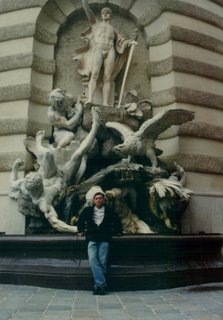 Rathaus
RathausThe present Vienna City Hall (Rathaus) was part of the ambitious programme of architectural improvements to Vienna introduced by Emperor Franz Joseph I, including the Ringstraße, the Rathauspark (City Hall Park), and the Opera. Friedrich von Schmidt, who had been one of the architects working on Cologne Cathedral, designed and built it between 1872 and 1883. It is the most important secular building in the neo-Gothic style in the city.
There are just too many things to do in Vienna that I could not do due to my short stay. Nevertheless, I enjoyed every moments I had. Last but not least, may I wish you a great experience if you are thinking of exploring Vienna.
Thanks and have a great holiday!
You can click on the link below to find out informations about Vienna.








